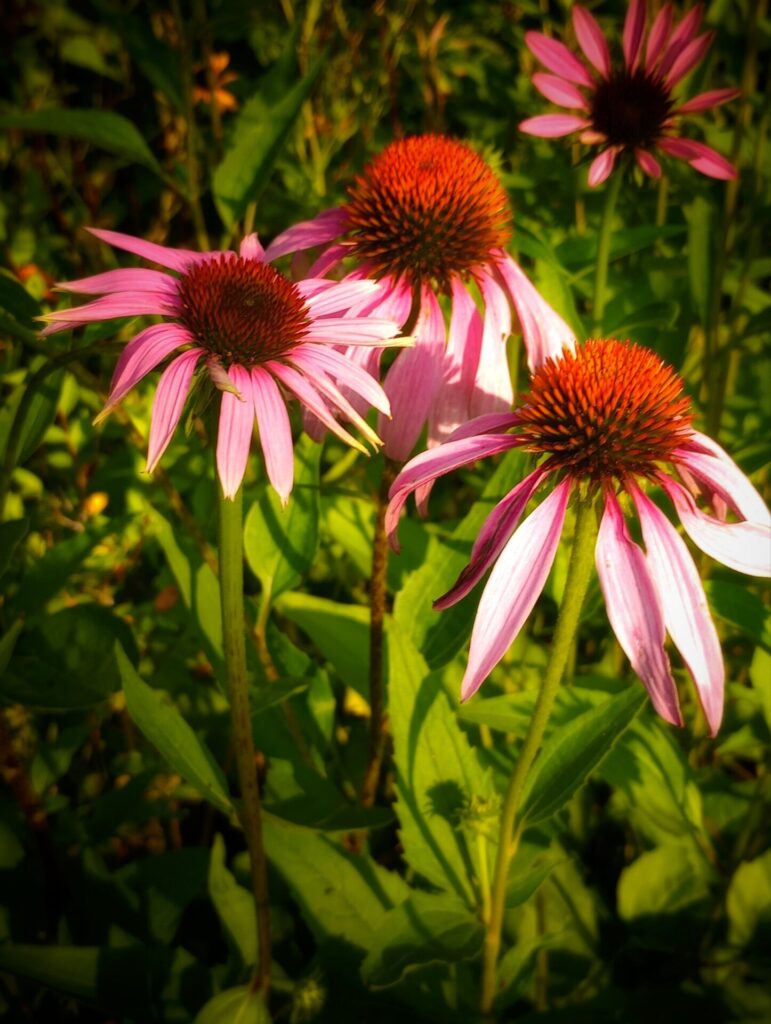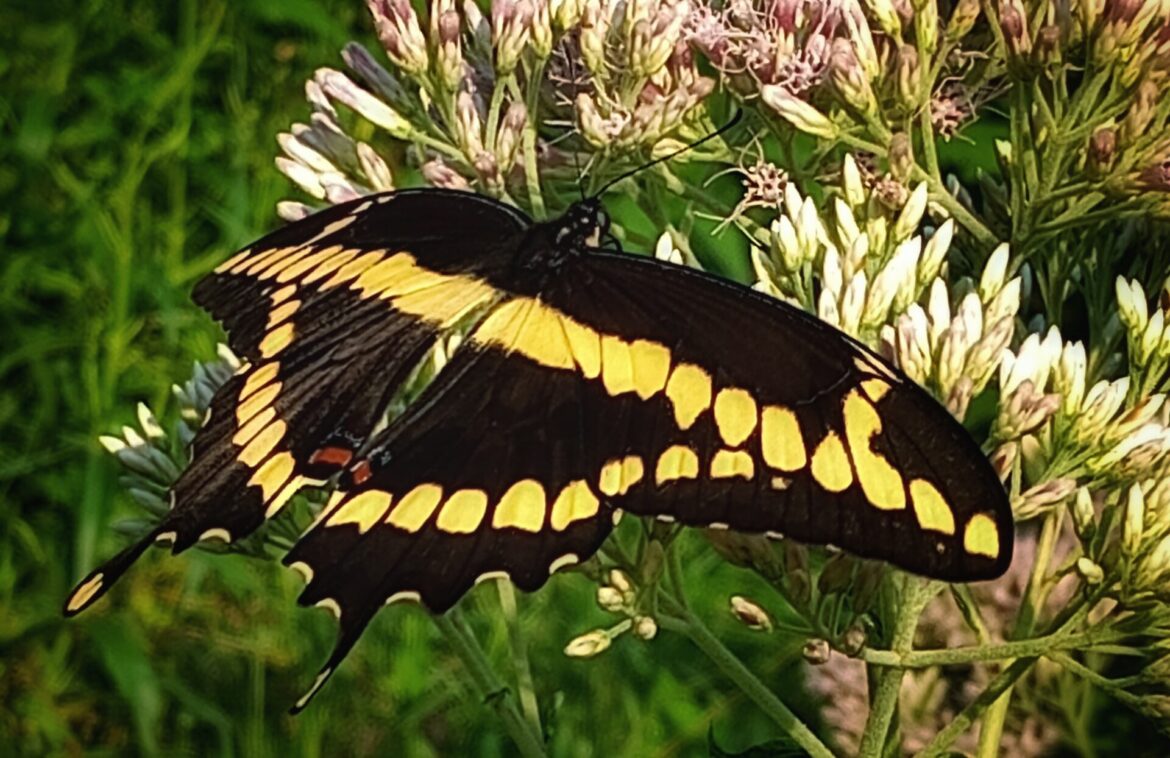As summer winds down, my thoughts turn to preparations for next year’s garden. As a painter of the natural world, gardening provides me endless inspiration and reminds me of the beauty and interconnectedness of all living things. I strive to create a little oasis that supports local wildlife and pollinators.

In designing wildlife gardens, it’s important to go native. Planting species that naturally occur in your region provides vital food and shelter for local fauna. Mimicking the structure of a natural ecosystem by allowing for different heights, ground cover, and density supports biodiversity. Leaving fallen leaves and twigs provides shelter for pollinators and other beneficial insects.
As flowers like purple coneflower, butterfly weed, and bee balm bloom next season, expect painted ladies, monarchs, and bumblebees to arrive for the feast. Birds will gather the seeds, making your garden part of their migratory journeys. With access to water, frogs and beneficial insects will help control pests. At night, bats may swoop in, consuming thousands of mosquitos.
By providing resources for local species, small gardens can make a big impact. If we all cultivated such wild pockets, together we could create a patchwork of habitat amidst urban areas. Much like an Impressionist painting, each garden is a single dot of color that combines into something beautiful. As summer fades, I eagerly await planning next season’s arrangement of my own tiny oasis that evokes a sense of wonder for nature’s artistry.
